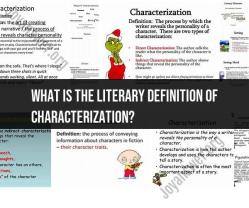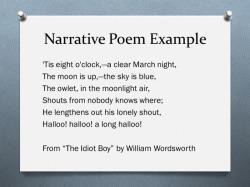What are the elements of a plot?
In storytelling, the elements of a plot are the key components that make up the structure of a narrative or story. These elements help to organize the events and actions in a way that engages the audience and creates a meaningful and coherent story. The basic elements of a plot include:
Exposition: This is the beginning of the story where the characters, setting, and initial situation are introduced. It provides essential background information to help the audience understand the context of the story.
Inciting Incident: This is the event or situation that sets the main plot in motion. It disrupts the normal life of the protagonist and presents a problem or conflict that needs to be resolved.
Rising Action: This part of the plot involves a series of events and complications that build tension and develop the main conflict. It's where the story starts to gain momentum and the characters face obstacles and challenges.
Climax: The climax is the turning point of the story. It's the moment of the highest tension and drama when the main character makes a critical decision or takes a significant action to resolve the conflict.
Falling Action: After the climax, the story begins to wind down. The falling action includes the consequences or aftermath of the climax and starts to tie up loose ends.
Resolution (Denouement): The resolution is the conclusion of the story. It provides closure and answers any remaining questions. It's where the main conflict is fully resolved, and the characters' fates are often revealed.
Conflict: Conflict is at the heart of the plot and is what drives the story forward. It can be internal (within a character's mind) or external (between characters or with the environment).
Characters: Characters are the individuals who populate the story and drive the action. They can be protagonists (main characters), antagonists (opposing characters), or supporting characters.
Setting: The setting refers to the time and place in which the story occurs. It can play a significant role in shaping the narrative and influencing the characters' actions.
Theme: The theme is the central idea or message of the story. It often reflects broader concepts, values, or lessons that the audience can take away from the narrative.
These elements work together to create a coherent and engaging story structure. While not all stories follow the same plot structure, these elements serve as a useful framework for understanding and analyzing narratives in literature, film, and other forms of storytelling.
Deconstructing a Story: The Essential Elements of Plot
The plot of a story is the sequence of events that occur. It is the what happens, when it happens, and to whom it happens. The plot is driven by conflict, which is the struggle between opposing forces. The conflict can be internal (within a character) or external (between characters or between a character and their environment).
The essential elements of plot are:
- Exposition: The exposition introduces the setting, characters, and conflict of the story.
- Rising action: The rising action is the series of events that lead up to the climax of the story. The conflict intensifies and the stakes get higher.
- Climax: The climax is the peak of the story, where the conflict is resolved.
- Falling action: The falling action is the series of events that follow the climax. The conflict is resolved and the story comes to a close.
- Resolution: The resolution is the ending of the story. It ties up loose ends and provides closure for the reader.
Plot Elements: Building Blocks of a Compelling Story
The plot elements are the building blocks of a compelling story. By understanding and using the plot elements effectively, you can write a story that will keep your readers engaged.
Here are some tips for using the plot elements effectively:
- Start with a strong exposition. The exposition should introduce the setting, characters, and conflict of the story in a clear and concise way.
- Build the rising action gradually. The rising action should build in intensity and suspense. Don't rush the rising action, or your readers will get bored.
- Create a satisfying climax. The climax is the most important part of the plot. It is where the conflict is resolved and the story comes to a head. Make sure the climax is exciting and satisfying for your readers.
- Don't forget the falling action. The falling action is important for resolving the conflict and tying up loose ends. Don't just rush to the end of the story after the climax.
- Write a satisfying resolution. The resolution is where the story comes to a close. It should provide closure for your readers and answer any lingering questions.
Crafting a Narrative: Understanding the Elements of Plot
Understanding the elements of plot is essential for crafting a compelling narrative. By using the plot elements effectively, you can write a story that will keep your readers engaged from beginning to end.
Here are some additional tips for crafting a narrative:
- Make sure your plot has a clear beginning, middle, and end. The beginning should introduce the setting, characters, and conflict of the story. The middle should build the rising action and lead up to the climax. The end should resolve the conflict and provide closure for the reader.
- Keep your plot moving forward. Don't get bogged down in unnecessary details or subplots. Focus on the main conflict of the story and make sure the plot is always moving forward.
- Create characters that readers care about. Your readers need to care about what happens to your characters in order to be engaged in the story. Make sure your characters are well-developed and believable.
- Raise the stakes. The stakes of the story should be high for the characters. The characters should have something important to lose or gain. This will create suspense and keep readers engaged.
- Write exciting and suspenseful scenes. The scenes in your story should be exciting and suspenseful. This will keep readers engaged and wanting to read more.
By following these tips, you can write a story with a compelling plot that will keep your readers engaged from beginning to end.












